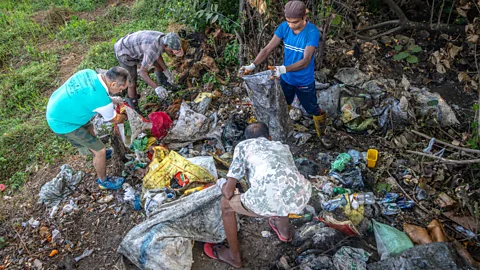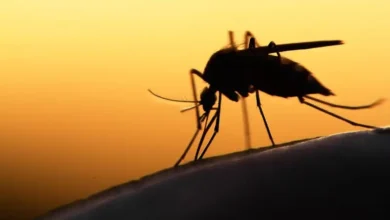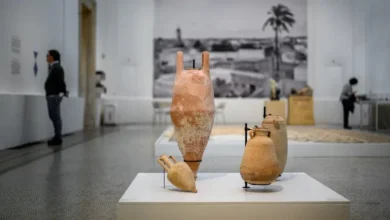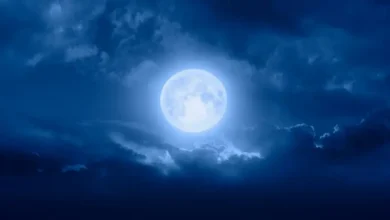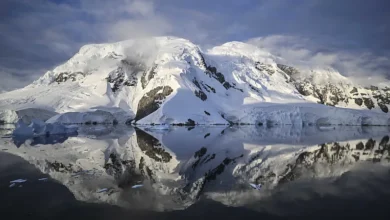From wastelands to wetlands: The fight to save Sri Lanka’s natural flood buffers

Sri Lanka’s capital is transforming floating garbage patches into biodiverse wetlands which are teeming with life.
Pay Dreschel is going for his daily morning walk around Thalangama Wetland, in Sri Lanka’s capital Colombo. The Sun casts a warm glow over flowering pink water lilies as a farmer scrubs down his water buffalo. A kingfisher hovers nearby. Soon, photographers will arrive to capture curved-necked egrets, waders probing for crawling worms, and little cormorants diving for freshwater fish.
Thalangama Wetland and its surrounding swamps, reedbeds, canals and rice fields teem with life. But this hasn’t always been the case. About 15 years ago, these ecosystems were degraded and filled with rubbish. They were “dirty, very dirty”, says Dreschel, interim country manager at the International Water Management Institute (IWMI) in Colombo.
He recalls how he spent one Christmas almost a decade ago cleaning the lake, scouring for piles of rotting garbage leaking contaminants into the water, and sorting waste for recycling. To his surprise, passersby stopped and started helping him. “I realised it’s not only me, locals also appreciate it,” he says. “But like me over all the years, they may have been waiting for someone to take the lead.”
The community came together to keep the massive wetland complex clean, forming the Thalangama Wetland Watch. Residents organise weekly collection runs, piling up sorted waste at a small collection unit which the municipality sends off for recycling. School kids volunteer, kayaking through the lake to dig up invasive water hyacinth.
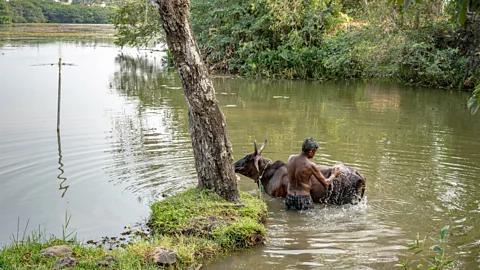
Home to over two million residents, Colombo is built on and around a massive network of wetlands. In 2018, Colombo became one of the 18 Ramsar wetland cities in the world – an accreditation which recognises cities for their commitment to restore, safeguard and value wetlands, with 25 new cities added to the list in 2022.
As Colombo is located in a river basin, the city is naturally prone to floods. Colombo’s wetlands act as a flood buffer, with 40% of floodwaters draining into wetland areas. They also sink carbon, purify the air and control temperatures. As temperatures warm and rains become more erratic, “wetlands are important to the city to mitigate climate change impacts”, says Chethika Gunasiri, an environmental scientist at the University of Tokyo who was part of Colombo’s Ramsar application. “Wetlands help Colombo mitigate pollution and natural disasters. They help reduce human stress as more and more people are now living in high rise buildings,” she adds.
Historically, wetlands were a “part and parcel of people’s lives in Colombo,” says Missaka Hettiarachchi, a senior fellow at the World Wildlife Fund’s environment and disaster management programme, who has been studying wetlands in Colombo for several years.
Ancient kingdoms thrived in a well-managed wetland system where people used them for transport and to grow food, Hettiarachchi says. Their downturn began in the British colonial period from the late 18th Century. When industries grew, people acquired wetlands to drain for building housing and businesses. A flood retention scheme introduced during British rule in 1924 led to the creation of manmade drainage canals, preventing people from travelling through the wetlands. Although they are regularly cleaned, many of these canals are now polluted and choked with invasive plants.
“The canals are no longer enough to prevent Colombo from flooding,” says Gunasiri.
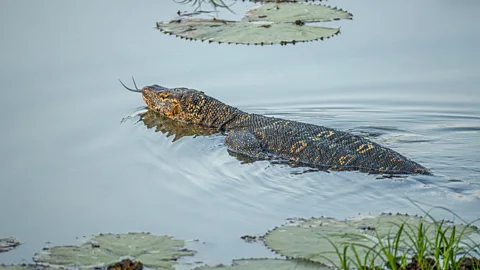
From the 1980s, massive rubbish mountains began to appear in natural wetlands, such as Meethotamulla in the Colombo metropolitan area, which spans 100,000 sq m (107,639 sq ft) and stands 60m (197 ft) tall. The wetland was closed after one of the rubbish mountains collapsed and killed 32 people in 2017.
During the civil war (1983-2009), the encroachment of wetlands continued, as they were sold to internally displaced people, Hettiarachchi says. Some marshy wetlands turned into shrub habitats that couldn’t hold enough water to protect the city from flooding, he says. According to one study, Kolonnawa Marsh, which forms the largest part of Colombo‘s flood retention belt, has lost 65% of its area since the 1800s. A 2014 study concluded that 44% of the marsh has turned into a shrubland. The soil too has changed, reducing its capacity to absorb and drain water, leading to increased flooding and disasters.
Wetlands help Colombo mitigate pollution and natural disasters – Chethika Gunasiri
By the 2000s, the city’s wetlands were “a bloody mess”, Hettiarachchi says. During his PhD, he would ask residents living near the degraded wetlands about these ecosystems, and they would respond: “No, we don’t know any wetlands.”
The decline of the wetlands made Colombo more prone to flooding. In 2010, a series of disastrous floods affected nearly 700,000 people and submerged the country’s parliament. This led to a shift in government policy. “I think it took a few significant flooding events for the government to realise, okay, wetlands are a significant flood control mechanism, so we need to do something about it,” says Radheeka Jirasinha, a freshwater and wetland management researcher at IWMI.
As part of the ongoing revival, the government introduced the metro Colombo wetland management strategy in 2016, which aims to include wetlands in urban planning, prevent further wetland loss, restore the ecosystems and involve the local community in their conservation. Following that, wetlands were incorporated into urban infrastructure by constructing cycling tracks, jogging paths and recreational areas around them. “The idea was to bring people to the wetlands,” Gunasiri says. The government initiatives pulled up invasive species like water hyacinth and introduced new soil and wetland plants to attract birds and other animals.
Today, Colombo is home to four wetland parks and several other recreational spaces linked by wetlands. These restored wetlands look very different from those left untended. Photographer Nazly Ahmed says that when he went to Kotte, a Colombo suburb and the administrative hub of the country, in the late 1990s to play cricket with friends, the wetlands were covered entirely by water hyacinth. This invasive weed clogs waterways, grows over native plants, reduces oxygen and creates breeding grounds for mosquitoes, and their growth is linked to poor water quality and high pollution levels.
This Colombo suburb is now home to jogging paths and birdwatching spots built around the wetlands and waterways. “No one knew about wetlands then, but people are talking about wetlands now,” says Ahmed.
Gunasiri says these green infrastructure projects have helped people to engage with the city’s wetlands again and that people now flock to the urban wetland parks for an evening jog. “When these natural systems become public areas, people start to have a sense of ownership,” she says.
Jirasinha agrees. People feel that they can use these spaces now, she says. “They’re concerned about what is happening. And suddenly, people look at the water and are like, ‘Hey, it’s polluted…where is that coming from’?”
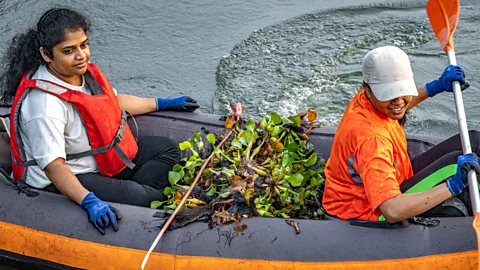
It’s not only the government that is managing Colombo’s wetlands. Community initiatives like the Thalangama Wetland Watch have started to take responsibility too. “If you keep wetlands free from rubbish and maintain them, they increase the property value in urban areas,” says Drechsel, who believes people are willing to pay twice as much for land with wetland views.
Although there’s an attitude shift and residents are now aware of the value the wetlands add to the city, problems are far from over, Hettiarachchi says. After the civil war ended in 2009, Colombo’s urban population expanded rapidly. Developments sprung up, leading to the draining of wetlands for housing, businesses and infrastructure. Since 2009, Colombo has lost 2.12 sq km (0.8 sq miles) of its wetlands. According to a 2024 study, wetlands absorb 62.1mm more floodwater than built up areas in Colombo. Despite collective efforts to clean and restore some of the city’s wetlands, the overall loss of wetland area means that Colombo is becoming more vulnerable to floods, the 2024 study notes.
The travel emissions it took to report this story were 10kg CO2. The digital emissions from this story are an estimated 1.2g to 3.6g CO2 per page view.
The Ramsar accreditation pushed the state government to temporarily suspend filling and destroying any wetlands. “So there’s definitely proactive action to safeguard the city’s wetlands, but we need a coordinated effort from government, non-profits and communities to stop their degradation,” says Chaturangi Wickramaratne, a freshwater ecologist at IWMI.
Gunasiri explains that wetland education is vital for citizens to understand their importance in urban resilience. “More and more wetlands need to be a part of the city’s functions, linked to people’s wellbeing, so people begin to care about them more,” she says.
Wetlands can also help with the city’s food shortages, says Hettiarachchi. “You don’t need irrigation systems to grow food, you can use these ecosystems – they are also fabulous breeding grounds for fish,” he says.
Behind the new use of Colombo’s wetlands for people’s wellbeing, Gunasiri notes an underlying urgency to protect these ecosystems. “If we lose our wetlands, Colombo will be unliveable.”
